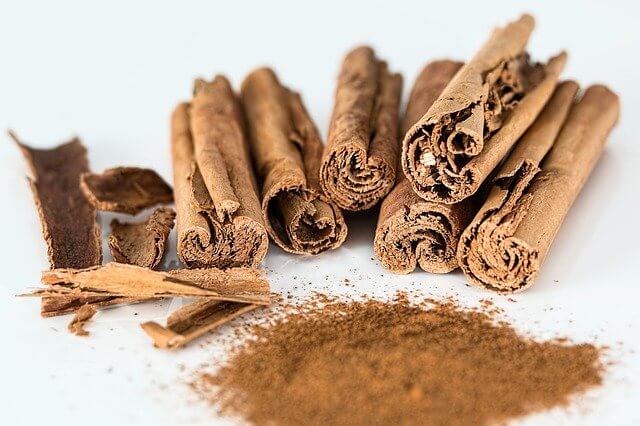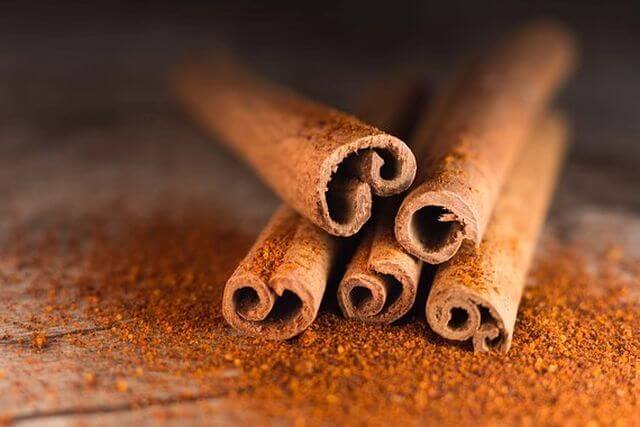Everyone loves cinnamon. Who doesn’t? You can put it in your hot chocolate, tea, tequila, or as an ingredient in your porridge, cake, or curry. It’s a spice that goes well with many sweet and savory dishes. Especially during the winter season. But what is cinnamon and where does it come from. Cinnamon comes from the bark of various cinnamon tree species from the genus Cinnamomum.
Cinnamon – Ceylon vs Cassia Cinnamon
Cinnamon is one of the oldest spices and was used in ancient times for its healing properties. But be careful, cinnamon is not just cinnamon.
There are only a few species used commercially for their spice. Cinnamomum verum also called true Cinnamon or Ceylon cinnamon and Cinnamomum cassia also known as cassia cinnamon or Chinese cassia. You can get them usually as dried bark strips or as bark powder. Many people usually go to the supermarket and just grab a packet without really giving it a thought. But did you know that Ceylon cinnamon is much healthier than cassia cinnamon?

Ceylon Cinnamon
Ceylon cinnamon comes from the true cinnamon tree native to Sri Lanka (formerly Ceylon, hence the name). Nowadays, many other regions of South Asia also produce Ceylon cinnamon. For example, the Seychelles or Madagascar.
Ceylon cinnamon is the finer type of cinnamon of higher quality and is more expensive than cassia cinnamon. It also contains much less coumarin which makes it safer for consumption.
You can recognize Ceylon cinnamon by its many thin layers of flaky bark. It is much more aromatic and less pungent than the cassia cinnamon. This is primarily due to Ceylon cinnamon containing only bout 50 – 60 percent of cinnamaldehyde in its oils.

Cassia cinnamon
Cassia cinnamon originates from southern China and other parts of southeast Asia, such as Indonesia, Malaysia, and Thailand for example. It is cheaper and has a lower quality. However, it is the most common cinnamon produced for and sold in western countries.
You can recognize cassia cinnamon by its thick layer. It is coarser, darker, and smells much more intense due to containing around 95 percent of cinnamaldehyde in its oils.
Cassia cinnamon, however, contains much more coumarin, which in large quantities can be toxic to humans.
Coumarin
Coumarin, which has a pleasant spicy odor, is a naturally occurring aromatic component of cinnamon, found in relatively high concentrations in cassia cinnamon. Consuming a high dose of coumarin can cause headaches, nausea, dizziness, and even liver or kidney damage, especially in the more sensitive people. In some countries, maximum daily consumption limits are recommended. The German Federal Institute for Risk Assessment recommends a daily intake (TDI) of 0.1 mg coumarin per kg body weight. This is a tolerable amount and has no negative effects on the human body. There is no such recommendation in the USA, but coumarin must not be used as a food additive.
Small amounts that occur naturally in plant foods are classified as harmless. 1 kg of cassia cinnamon contains about 2.1 to 4.4 g of coumarin. So as long as you don’t shovel spoonfuls of cinnamon down your throat it would be difficult to consume critical amounts.
Benefits of cinnamon
Regardless, cinnamon has some health benefits. For centuries it has been an integral part of various cultures as a healing household remedy. Cinnamon has a regulating effect on the blood sugar level and can lower this. It can promote appetite and stimulate intestinal activity which helps in preventing bloating and gas.
Cinnamon can have a disinfecting effect due to the essential oil it contains. Eugenol. Eugenol is a polyphenol – a cell-protecting antioxidant – which also helps relieve cold symptoms. Ceylon cinnamon can hold up to 10 percent of eugenol while cassia cinnamon contains almost zero.
So while Ceylon is the better quality, most cinnamon sold in shops contains cassia cinnamon. If you wish to buy Ceylon, be sure to buy the whole cinnamon sticks and remember the characteristics of the Ceylon cinnamon.
You can mostly find Ceylon cinnamon in Asian supermarkets or deli stores. Also, keep in mind buying organic cinnamon from fair trade to avoid pesticides and support fair growing conditions.
- Where Are Tomatoes Native To? - August 1, 2022
- Are Organic Chickpeas Better? - July 26, 2022
- How Being Vegan Helps Climate Change - July 24, 2022




